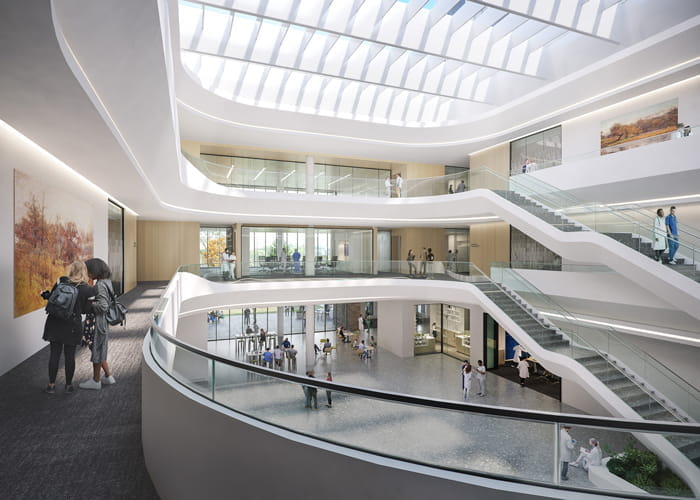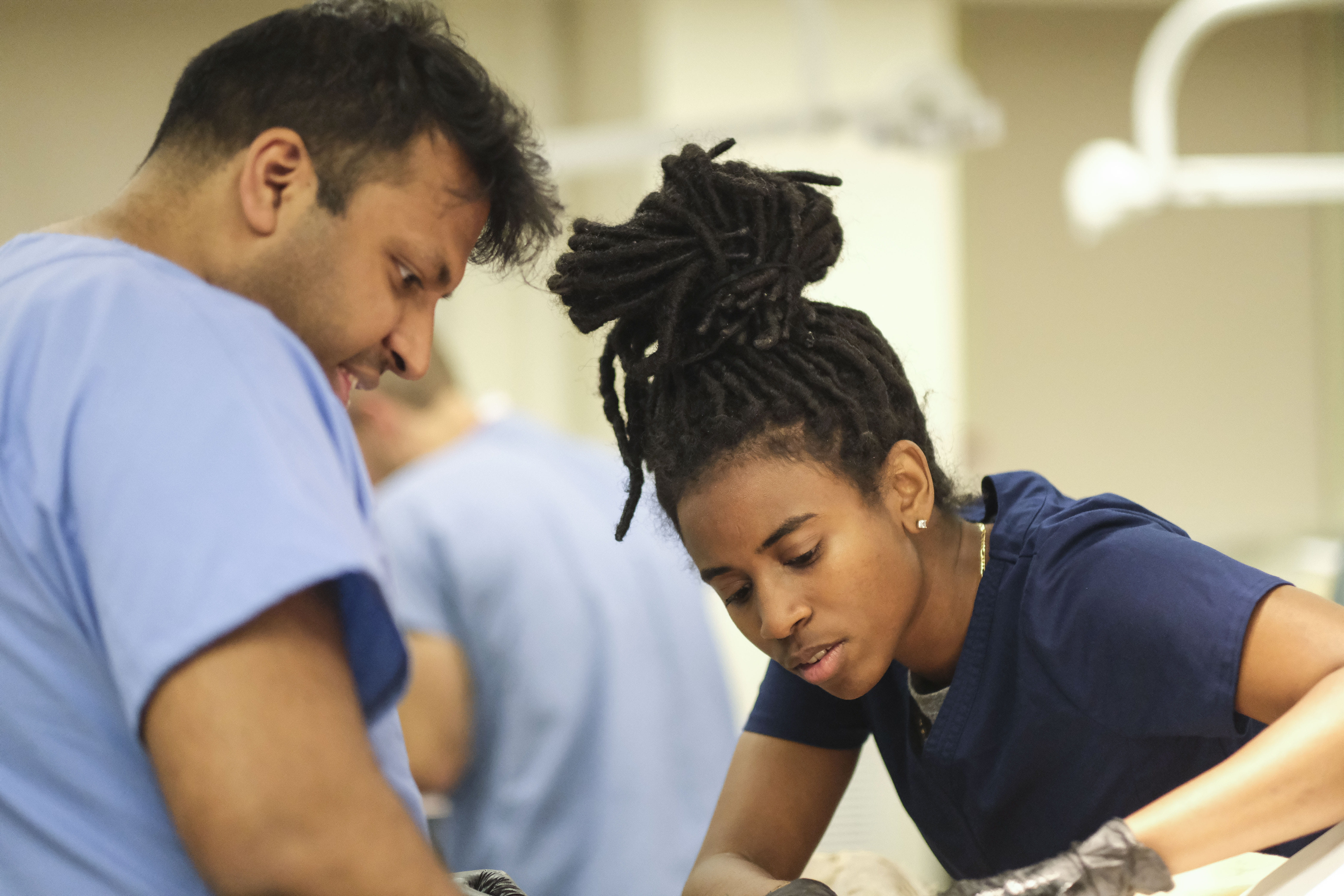Surgical skills center
Surgery is precise work. It demands a steady hand, deft touch, and keen judgment — all while being agile enough to adapt at a moment's notice. But such skills are not intuitive. They are learned.
This vital training will unfold on the third floor of the new medical education building, a space that offers the latest technology, experienced instruction, and a proven curriculum. The spacious facility will cater to surgeons of all levels — from new residents learning sutures to vascular surgeons practicing the latest techniques in opening blocked arteries.
Along with stations for cadaver dissections, the center will be outfitted with the latest virtual reality simulation for minimally invasive and robotic procedures, including the da Vinci Surgical System. The center also has dedicated space for continuing medical education, like a multipurpose room set up as a state-of-the-art operating room that allows surgical teams to run complex scenarios. And just as importantly, the center will be a short walk from the new IU Health hospital, making it easily accessible for residents, fellows and faculty.
Meanwhile, IU School of Medicine will continue to rely on a nationally-respected curriculum, where trainees progress through modules taught by experienced surgeons who also oversee guided practice. And before a resident ever performs a procedure on a real patient, they will have passed a rigorous assessment in the surgical skills center.







